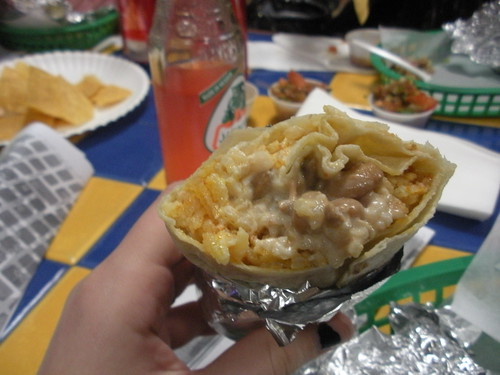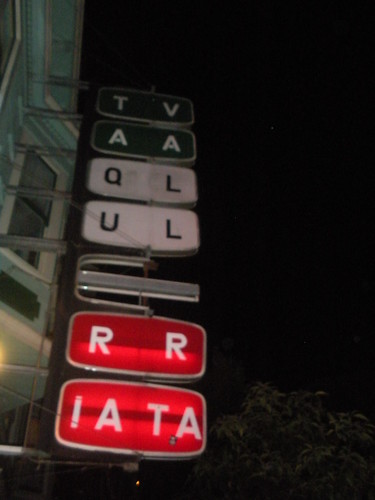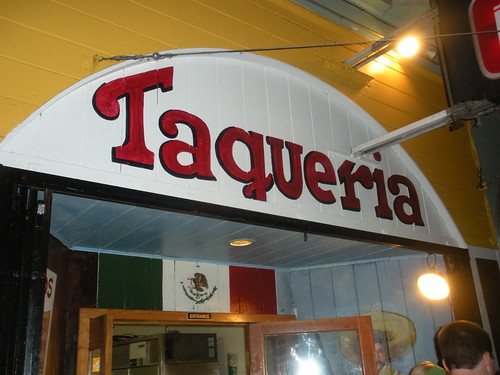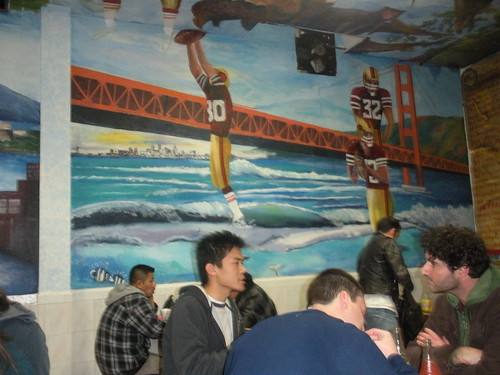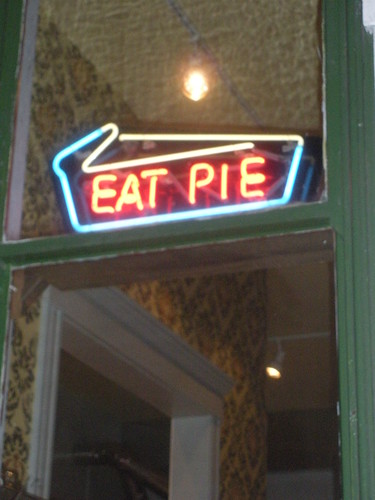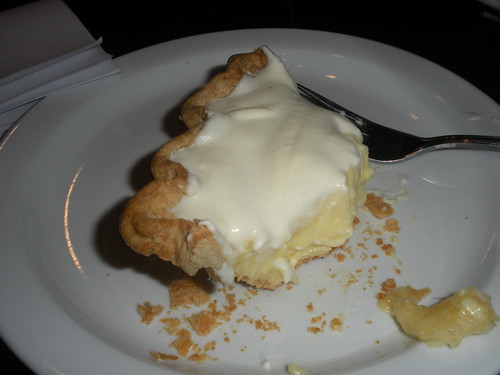The question of what to eat for dinner has become increasingly complicated. With new technology and more efficient farming methods, the focus of food production is all about maximum profit and with little regard to quality. Quality seems to be the lowest of all priorities in the industrial food chain, as all efforts are focused on producing massive quantities of certain foods at low costs. And consumers eat it up -- most Americans value low price above all, which is why they are willing to eat mystery meat from McDonalds, so long as it's only 99-cents.
Let's back up. In our Eating San Francisco class, we've been lucky enough to eat at some pretty cool and interesting restaurants in one of the greatest culinary cities in the world. Our plan all semester was to end class by reading Michael Pollan's The Omnivore's Dilemma, and dine at none other than the McDonalds conveniently located on Haight Street.
But as we read Pollan's masterpiece, which explains just how screwed up America's food industry is, the thought of eating at this mega-chain (which is no worse than its competitors, but for better or for worse has become icon for fast food, and thus the brunt of all criticism) was no longer very appealing.
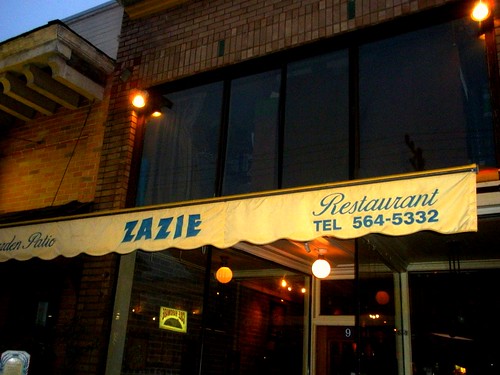
So our class decided to go to Zazie, a French Bistro in nearby Cole Valley. At around $15-20 per dinner entree, this place was clearly a cut above good old Micky-Ds. And oh, was it a noticeable difference! The quality was evident in the service and meal. It was the kind of place where the food was truly special, and the reason for being there. The waitress chatted with us about her favorite dishes and spoke enthusiastically about what drinks should accompany it. When the food was presented, each dish was a work of art.

I ordered salmon, and it was laid over a bed of couscous and sprinkled with fresh herbs, sweet cherry tomatoes, snap peas and a wedge of lemon. It was so fresh and well seasoned that each bite was exciting. Also, the food looked like what it was: the fillet of salmon clearly was fresh from the sea - no unnecessary processing or preservatives. The vegetables were fresh, not frozen, and came from local farms. Couscous is a processed wheat product but is still fairly natural, as it is an ancient dish, not a byproduct of the modern food industry.
There was something so pure and good about the meal. It's the feeling of eating "real food," not something we always get these days.
In comparison to Exhibit B: Fake Food
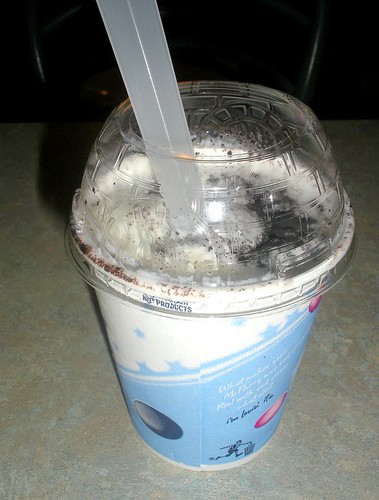
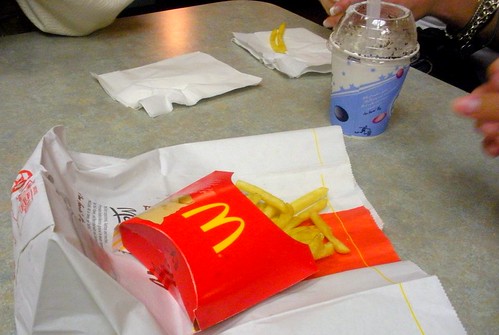
After dinner we headed over to McDonalds to basically fulfill our obligation of eating there. I eat at McDonalds from time to time, but it's not a decision I like to consciously think about. Having just read The Omnivore's Dilemma, and just dined on such high quality food at Zazie, the idea of McDonalds did not seem appealing.
In his book, Michael Pollan talks a lot about McDonalds. The most astounding point he makes about fast food (and all industrialized food) is that it is made up primarily of corn, due to corn farmers constantly growing a surplus and selling it for various uses (from feeding livestock to fueling cars as ethanol) on the cheap.
The French fries, for example, would seem to be a potato product, but really half of the calories come from corn, in form of the oil they're fried in. Or the McFlurry (I enjoyed an Oreo one that night) seems like an ice cream dish, but contains plenty of corn: corn syrup solids, mono and diglycerides (from corn) and milk from corn-fed cows. The chicken nuggets and hamburgers: corn. The soda: tons of corn. You'd really have to read the book to understand just how much corn goes into the food we eat. Pollan doesn't conclude that this is going to lead to mankind's extinction, but it sure doesn't seem like a good idea.
Comparing the two dining experiences, there was really no contest. Zazie was a relaxing culinary experience. We wined and dined slowly, conversed merrily, and practically licked our plates clean from the delicious entrees.
At McDonalds we were herded like cattle into a line where we ordered, waited, went up to the counter to retrieve our feed, and sat down at tables. We bussed our own trash. The employees seemed irritated that our large group had come. They told us not to take pictures. The food tasted good, but in that manufactured kind of way. The McFlurry had a fake feeling, not like real ice cream. It is cold and sweet but there is something different.
Nonetheless, there are obvious reasons we can't all eat at Zazie every night. For one thing, the price would make it impossible for many people to go. I personally could only go as a rare treat. My meal cost $16, which I would make in about two hours of working. I'd go broke in a hurry eating like that. Also there's the time factor. We spent about two hours at Zazie, whereas most days I devote about a half hour to eating dinner. If I had to eat out on a typical day, I'd have to go somewhere that could serve me quickly. And cheaply. Hence the reason why I do eat fast food occassionally.
However, reading The Ominvore's Dilemma has made me more conscious of the impact of these decisions. I do feel inspired to make an effort to eat whole, natural foods more often. There are farmers markets all over the city that put local, organic produce just a walk or busride away. While I may not be resolving to abstain from meat or fast food altogether, I am determined to make small, positive changes for the sake of the earth and my own health.
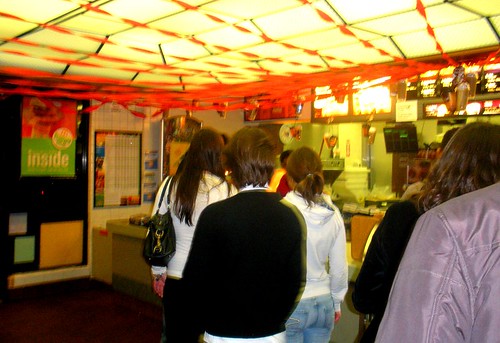


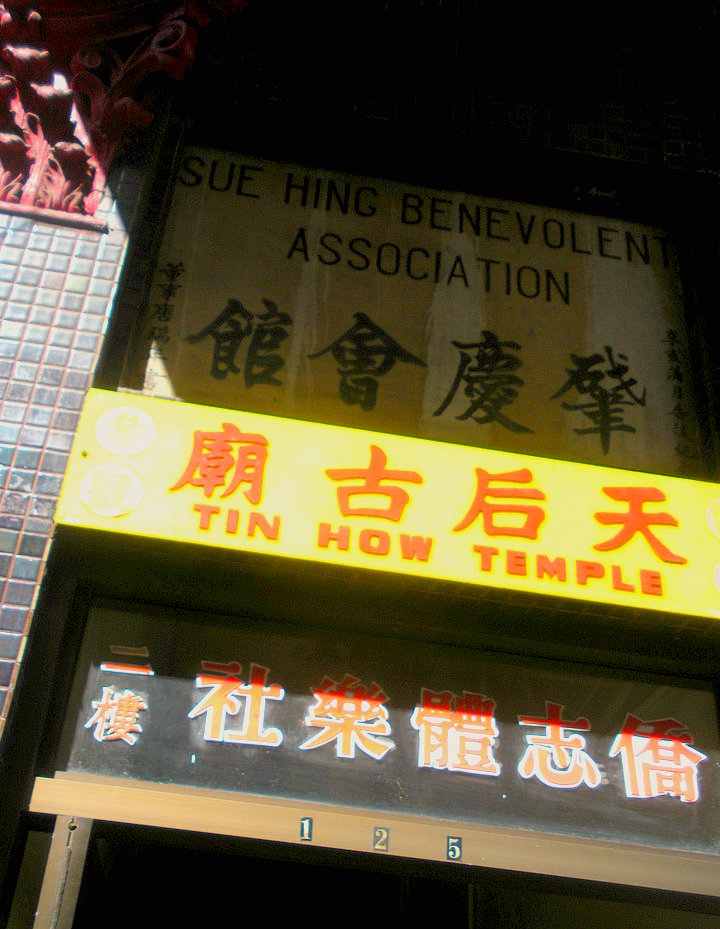
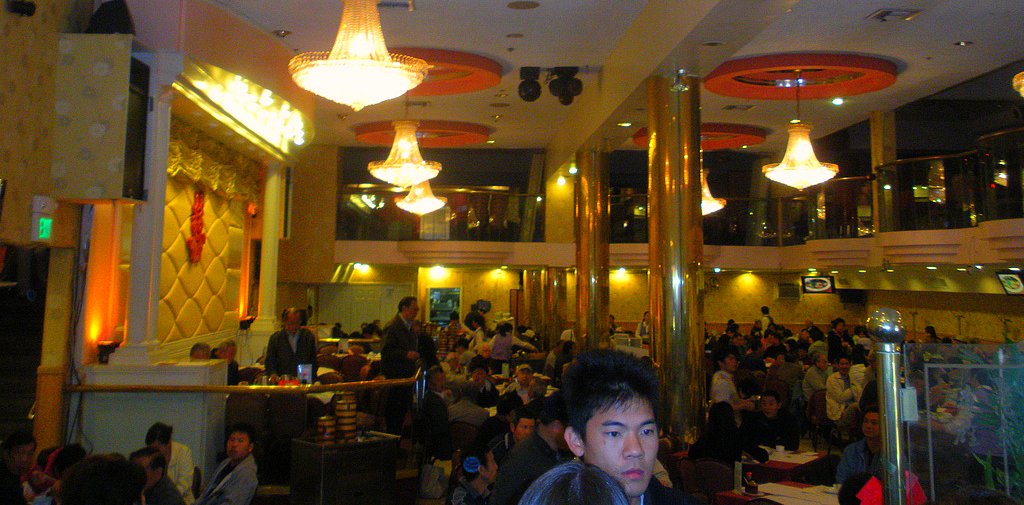


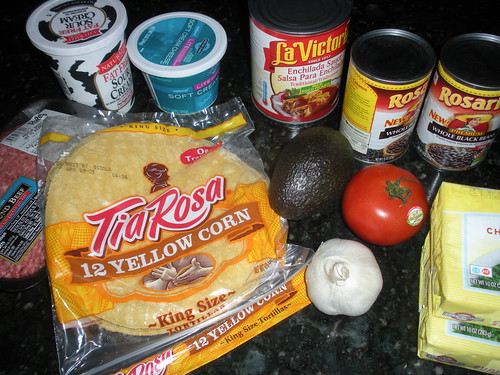

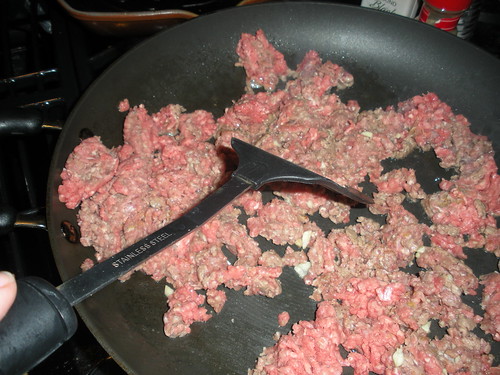



 Step 2: Top a medium corn tortilla with desired fillings. In this case, spinach/cheese blend, enchilada sauce, and ground beef.
Step 2: Top a medium corn tortilla with desired fillings. In this case, spinach/cheese blend, enchilada sauce, and ground beef. Step 3: Fold both ends of tortilla over and place in saucey baking dish.
Step 3: Fold both ends of tortilla over and place in saucey baking dish.






